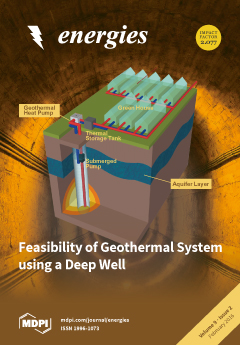Open AccessArticle
Coordinated Voltage Control in Distribution Network with the Presence of DGs and Variable Loads Using Pareto and Fuzzy Logic
by
José Raúl Castro 1,2,*, Maarouf Saad 3,†, Serge Lefebvre 4,†, Dalal Asber 4,† and Laurent Lenoir 4,†
1
Departamento de Ciencias de la Computación y Electrónica, Universidad Técnica Particular de Loja, Loja 11-01-608, Ecuador
2
Power Electronics and Industrial Control Research Group (GREPCI), Ecole de technologie supérieure, Montréal, QC H3C 1K3, Canada
3
Department of Electrical Engineering, Ecole de technologie supérieure, 1100, Notre–Dame Ouest, Montréal, QC H3C 1K3, Canada
4
Hydro-Québec’s research institute (IREQ), 1800, boul. Lionel-Boulet, Varennes, QC J3X 1S3, Canada
†
These authors contributed equally to this work.
Cited by 12 | Viewed by 5730
Abstract
This paper presents an efficient algorithm to solve the multi-objective (MO) voltage control problem in distribution networks. The proposed algorithm minimizes the following three objectives: voltage variation on pilot buses, reactive power production ratio deviation, and generator voltage deviation. This work leverages two
[...] Read more.
This paper presents an efficient algorithm to solve the multi-objective (MO) voltage control problem in distribution networks. The proposed algorithm minimizes the following three objectives: voltage variation on pilot buses, reactive power production ratio deviation, and generator voltage deviation. This work leverages two optimization techniques: fuzzy logic to find the optimum value of the reactive power of the distributed generation (DG) and Pareto optimization to find the optimal value of the pilot bus voltage so that this produces lower losses under the constraints that the voltage remains within established limits. Variable loads and DGs are taken into account in this paper. The algorithm is tested on an IEEE 13-node test feeder and the results show the effectiveness of the proposed model.
Full article
►▼
Show Figures





